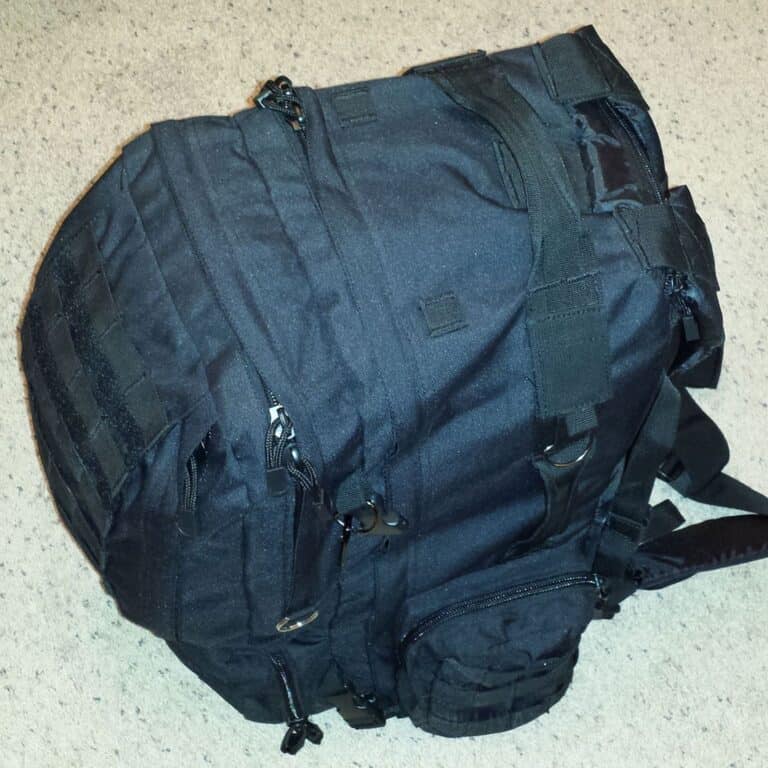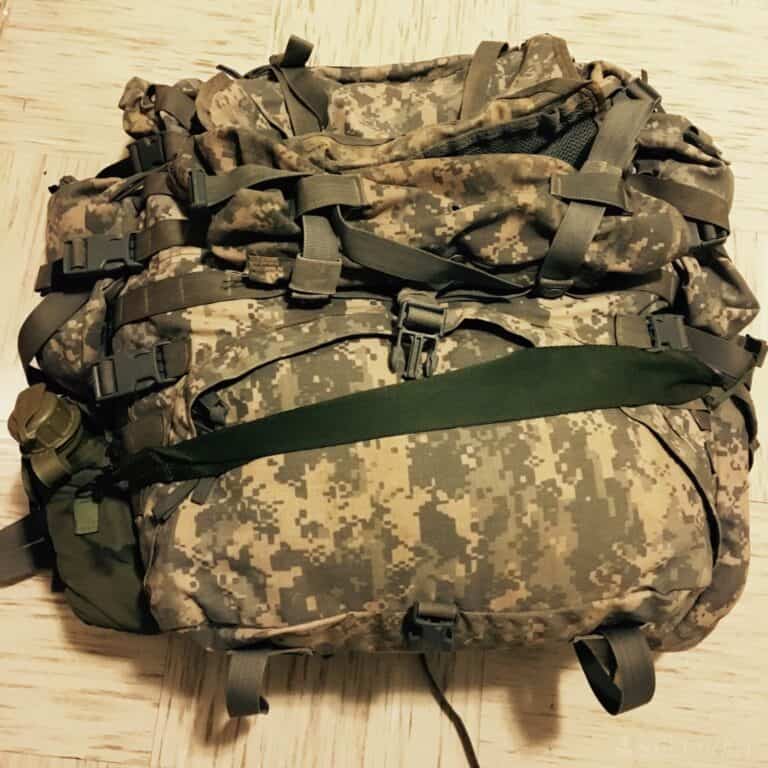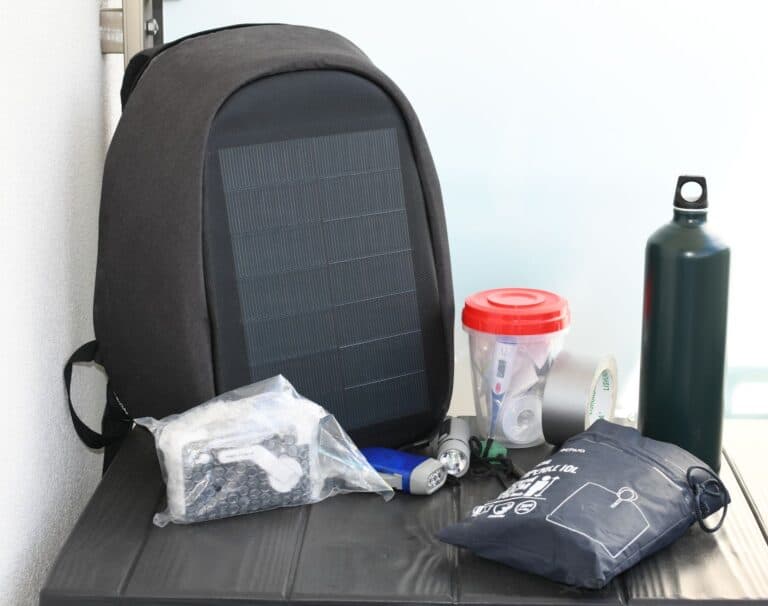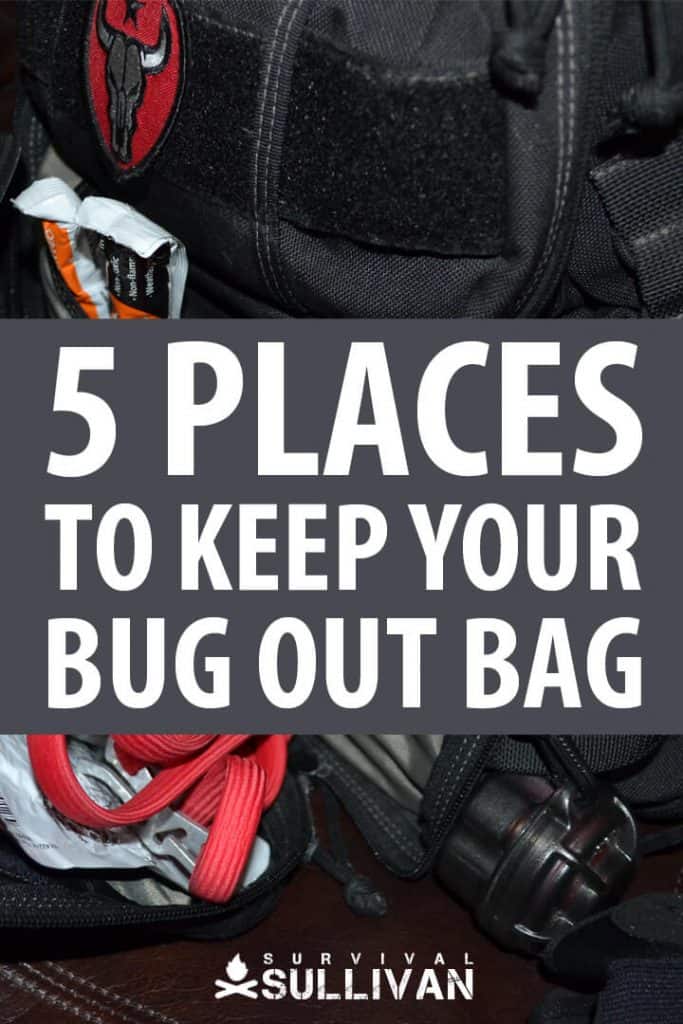A BOB is a prepper’s best friend, and no matter what, you should have a plan to make use of it in order to reach a safe BOL or rendezvous point.
While you might have spent countless dozens of hours fine-tuning your BOB loadout and pouring over maps and related data in order to select your bug-out routes, there might be one simple, Mr. Murphy-approved flaw in your intricately practiced and researched bug-out business.

You might not be able to access your BOB when you need it!
It’s true: without forethought and taking appropriate measures to ensure you’ll be able to reach your BOB when the balloon goes up, the seas roar and the mountains give up their dead, you may be up a very unpleasant creek without so much as a water filter or a solar charger.
To make sure that does not happen, today’s article will offer up five places to keep your BOB as well as the pros and cons of each.
Choose Carefully
Each and every place you keep your BOB will have its own share of perks and flaws when it comes to fitting in with your greater survival plan. None will be foolproof, and none will guarantee you have your BOB handy when you need it most.
The only thing that can make that happen is keeping your BOB with you at all times. Let’s get real: almost no one is willing to do that.
The obvious solution to the problem of storing your BOB here or there is to “cut the knot” and simply get multiple, redundant, identical BOB’s. Problem solved!
Wherever you go, a BOB will be nearby outfitted with the exact same stuff in the exact same way, ready to roll!
Unfortunately, a fully kitted BOB is an expensive piece of accoutrement and most preppers will balk at even one duplicate BOB, to say nothing of several. A more specialized, leaner bag like a Get-Home Bag can help fill in the capability gap for commuters and road warriors.
At any rate, nothing beats a BOB when you need to haul your entire survival kit with you in one go. Have a look at the following places where you might choose to keep your most prized survival possession.
1) Home
Home is the natural habitat of the BOB, and most preppers assume that they will be at home or able to get home to access their BOB before bugging out, or will be at home for some time after the onset of a crisis and then later departing once the situation has deteriorated to the Point of No Return.
There is nothing wrong with this mindset, and for most of us we will be spending, on average, at least half of your time at home (though with work commitments it sure does not feel like it!).
The trouble comes in when you are away from home- at work, on a trip, etc. – and something so bad happens you need to bug out now, right now. What do you do then?
I suppose you’ll be putting your survival improv and austere living skills to the test eh? Fine, but improvisation is the province of those dealt snake eyes or simply unprepared. You might not be able to do anything about the former, and you should take steps to prevent the latter.
One option is to make use of a get home bag, sort of a smaller, mini-BOB optimized for getting you home to your BOB, or alternately just haul your BOB with you when you leave the house. It gets old toting them around, but it is doable.
2) Vehicle
Since I mentioned it in number one, keeping your BOB in your vehicle is an entirely viable option. This ensures that it will more or less always be close by so long as you are driving.
At home, it is in the driveway. At work, the parking lot. On a road trip, you’re good. Keeping a BOB as mobile and flexible as you are has much to commend it.
The downsides are car-borne BOBs and their contents degrade faster since they will doubtlessly be suffering temperature extremes; hot in the summer, cold in the winter. This does not do batteries, food, and the like any favors. This can be mitigated with strict attention paid to rotation and replacement, however.
Another flaw is that cars are just not secure. If the BOB is visible, it might be targeted for theft. Any thief who breaks in for any other reason will certainly take or at least ransack it, and if the BOB is hidden and the car is stolen you still lose it.
Cars are not safe storage, people! If you are careful about hardening your car and following good asset protection protocols, you will probably be fine, but the risk will always remain.

3) Workplace / Office
The other, less-fun place you’ll be spending half of your life at. Keeping your BOB at the office ensures, like keeping it at home, it will be close at hand should you ever need it and you happen to be at work.
For preppers who have family at home or scattered here and there as part of their usual daily activities, this will be a big comfort for those who get the signal while on the job.
The downside is the other side of the home coin, simply put; if your BOB is at the office, and you are at home, you are right back in the same situation.
The other major downside is you had better have a keen understanding of both your workplace culture and where you fit into it before you haul a bulging backpack full of “survival gear” in there.
If your name or the name of your company is on the building, you can do whatever you want. If not, judge carefully. It would not do to have someone who breathes rarefied air stumbling across a bag of what could certainly be tools for conducting a terror attack.
Another question is safe storage. Will your BOB fit into a standard locker? If not, where can you keep it out of sight and safe from prying fingers?
4) Self-Storage
A self-storage site might seem like a strange place to keep a BOB, but their ubiquity throughout the nation means you can find a “just right” location that can afford you easy ingress and egress pretty much no matter where you are.
Considering that most locations have modest security and increasingly more indoor locations are climate controlled you can have a reasonable amount of assurance that your BOB will be in good shape, ready and waiting when you need to go get it.
The downsides to self-storage include potential issues with access in a pinch or after hours (gates, security, fences, etc.) and the non-zero chance the units will be hit in an organized way and cleaned out. This is more of a problem than you might think; look into it.
Nonetheless, compared to the average prepper’s workplace arrangement or vehicle, even a small self-storage site will allow you ample room to store much more than your BOB; you can turn it into a tiny prepper’s Batcave for a small fee each month.
For those who live in dodgy areas where home invasions and burglaries are common, this might be the ideal solution for safe storage.

5) Cache
A cache could be anything from a buried, environmentally sealed container to a hidden compartment in an old building. The choices and advantages are limited only by your imagination. Unfortunately, so are the drawbacks and they vary just as much.
Who might make use of a cache-based BOB, you ask?
Simple, it could be a prepper who wants to maintain a truly zero-profile level of equipment unless it is needed, or preppers living in areas where things like weapons and even electronics are subject to draconian oversight. It could even be someone who wants to move light and fast to an initial rendezvous site and then yoke up before moving on.
Caching survival gear is great for keeping it hidden, but may not be great for keeping it safe. Burying items, in particular, offers a host of challenges for preserving your gear, as water, insects, and more can easily destroy your valuable and hard-won gear.
Plus to check on it or access it you’ll have to go through the laborious process of locating and digging up your stash, all the while making sure you are not followed or observed.
Caching in a building or similar site always runs the risk of your BOB being discovered and subsequently stolen or disposed of by chance or force majeure. There are too many potential off-site caches to list them here.
Caching is a viable, but risky and niche approach to stashing your BOB and other survival gear.
What’s Your Ideal Place To Store It?
If you cannot afford multiple redundant BOBs, you’ll have to decide on where to store them. Whatever location you choose, you need to ensure as best you can your BOB will be available for a momentous SHTF event when you need it.
Think through all the variables carefully, keep it packed, and keep it close!


Charles Yor is an advocate of low-profile preparation, readiness as a virtue and avoiding trouble before it starts. He has enjoyed a long career in personal security implementation throughout the lower 48 of the United States.

Knowledge weighs nothing.
More skills = L ess gear.
There are many ways to make: fire, water, shelter, tools and weapons, as well as how to acquire food. LEARN THEM !